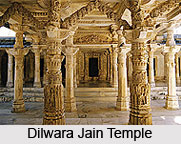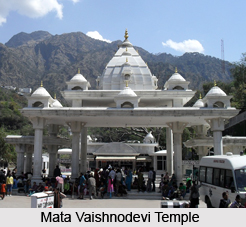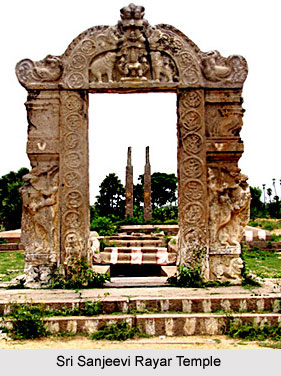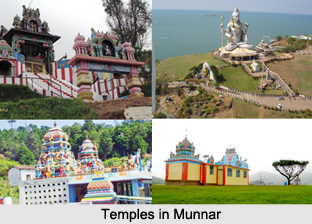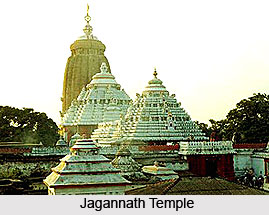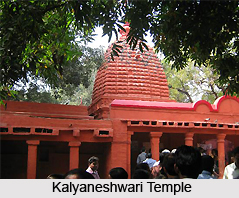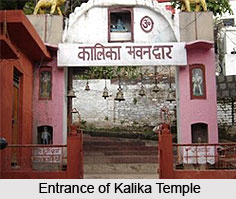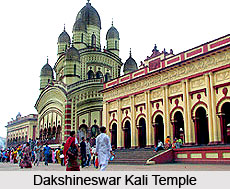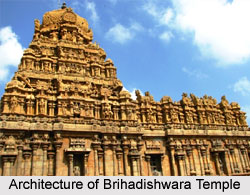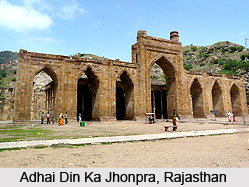 Mosques in India are not only a place of worship and centre of learning, but also masterpieces on stone depicting love and architectural wonder. India and Islam have a very old company bestowing different ways of life and lending a nourishing colour to the nation. There is a long association of temples in the Indian subcontinent but a deeper look into the architectural outline of the historical land unlocks new panorama of wonder in India. Islam has several worshipping centres or mosques in India devoted to its greatness. These are also some of the most renowned travel destinations.
Mosques in India are not only a place of worship and centre of learning, but also masterpieces on stone depicting love and architectural wonder. India and Islam have a very old company bestowing different ways of life and lending a nourishing colour to the nation. There is a long association of temples in the Indian subcontinent but a deeper look into the architectural outline of the historical land unlocks new panorama of wonder in India. Islam has several worshipping centres or mosques in India devoted to its greatness. These are also some of the most renowned travel destinations.
Advent of Mosques in India
The invasion of Muhammad Ghori laid the foundation stone of Islam in India and subsequently the construction of mosques. Afterwards, the Sultanates and the royal Mughal emperors founded in India the institutionalized Islamic worship. The elegant architectural style of the mosques in India, even if noticeably far eastern, took on subtle Indian nuances, developing into a separate style of its own. The towers of Indian mosques rise high and sustain a belief of equality and justice, and people lift their hands together in a magnificent traditional praise of the Almighty. Extraordinary in overall execution and design, the mosques are differentiated by the utter brilliance of their simplicity and style.
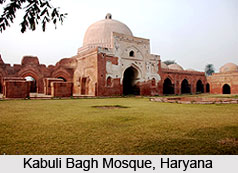 Mosques of Western India
Mosques of Western India
As a smart reminder of the diversity that India has, one can celebrate the continuity of life by mentioning the Hazrat Kwaja Moinuddin Chisti, a favourite religious place for both Muslims and Hindus. The spiritual Adhai Din Ka Jhonpra, in Rajasthan, is the centre of Islamic worship in India, which is a witness to the fact that Hinduism is the base of Islam. The legend attached to the strange Jhopda is one of persistent creation leading to the completion of the mosque construction in two and half days. This place is renowned as a favourable tourist destination. The state of Gujarat hosts mosques like Raj Babri Mosque, Rani Rupmati Mosque, Rani Sipri Mosque, Sidi Saiyyed Mosque and many more whereas the famous mosques of Goa include Jama Masjid, Namazgah Mosque, Safa Masjid etc. Waves of Islam had also touched the state of Maharashtra ages ago and mosques like Shah Ganj Masjid and Masjid of Biloli are the living testaments of the fact.
Mosques of Northern India
Jama Masjid is the largest mosque of India situated in Delhi and it is also regarded as final architectural extravagance of Shah Jahan, the Mughal emperor. It is also called Masjid-i-Jahan Numa where `Jahan` means world and `Numa` means visible. This mosque is positioned at a distance of about quarter of a mile from the Red Fort. It took six years to complete the construction work of the mosque. The formation was positioned on a high platform so that its glorious facade would be noticeable from all the neighbouring areas. Quwwat-ul-lslam Mosque in Delhi is one of the mosques in India where one can find pillars with pre-historic Hindu motifs. The reason behind it is that the pillars were taken away from the twenty seven temples of Qila Rai Pithora, city of Prithviraj Chauhan, the Rajput king. Some of the other major mosques in northern India are Humayun`s Tomb, Bara Imambara, Atala Masjid, Jumma Masjid, Dargah of Bu Ali Shah Qalandar, Kabuli Bagh Mosque, Pathar Masjid, Chhota Imambara, Haji Ali Dargah, Lat-ki Masjid, Solah Khamba Masjid etc.
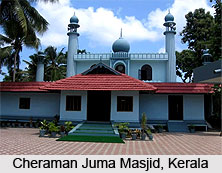 Mosques of Southern India
Mosques of Southern India
A large number of mosques are also located in the southern parts of Indian subcontinent. Islam found itself in the doorstep of change when it entered into South India through the rulers of Deccan and the Bahmanies. Islam mixed with the Dravidians in a strange way to create a new kitsch in method of architecture in mosques and centres of Islamic worship in the southern parts of India. In the 16th-17th century A. D, Qutb Shahis and Adil Shahis ruled Deccan which had a fair amount of contribution to the formation of mosques in Southern India and the continuation and propagation of Islam as a religion in Southern India. Cheraman Juma Masjid is supposed to be the first Indian mosque built around 629 AD. The Juma prayers initially started at this mosque. It is located in Kerala, in the Methala village of Kodungalloor taluk. The architecture of the mosque is a mixture of Arabian and Keralite art. The brass lamps used in the mosque are generally found in Hindu temples. A very old ceremonial pond is still found there near the mosque. The Bakrid and Ramadan festivals are celebrated with great religious fervour. Other mosques of the state include Varambetta Mosque, Malik Dinar Mosque, Mishkal Mosque, Shahre Mubarak Grand Masjid etc. Prominent mosques which stand in Andhra Pradesh are Mecca Masjid, Hazarath Bal Mosque, Bada Pahad Dargah and others whereas in the state of Karnataka the mosques enlist Jamia Masjid, Noor Masjid, Khalifa Masjid and many others. Tamil Nadu and Puducherry have also been the centres of Islam since ages and have housed a number of ancient mosques exhibiting architectural splendour. Kazimar Big Mosque and Athar Jamad Masjid are the significant ones of Tamil Nadi while in Puducherry the important ones include Mulla Moahmed Mosque, Jamai Mosque, Meeran Mosque, Kuthbha Mosque and others.
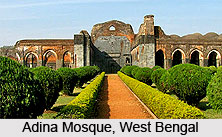 Mosques of Eastern India
Mosques of Eastern India
Eastern India has also been the host of Islamic culture since ancient times and thus houses some of the magnificent mosques. Exquisite architecture embellishes these mosques and invites a sea of devotees. Some of the prominent mosques in the state of West Bengal include Adina Mosque, Nakhoda Masjid, Tipu Sultan Shahi Mosque and others. Pathar Ki Masjid and Sher Shah Suri Masjid are the important mosques of Bihar and are the testaments of fine Afghan architecture. In Odisha, Jama Masjid, Capital Mosque, Qadam Rasul etc are the significant mosques which, apart from being important religious centres, also form alluring tourist destinations. Some of the ancient mosques also stand in the sate of Jharkhand boasting the ancient cultural heritage of the state. One such prominent mosque is Jami Masjid. These mosques are exemplary of the fine amalgamation of different architectural styles and also form important landmarks of the place.












